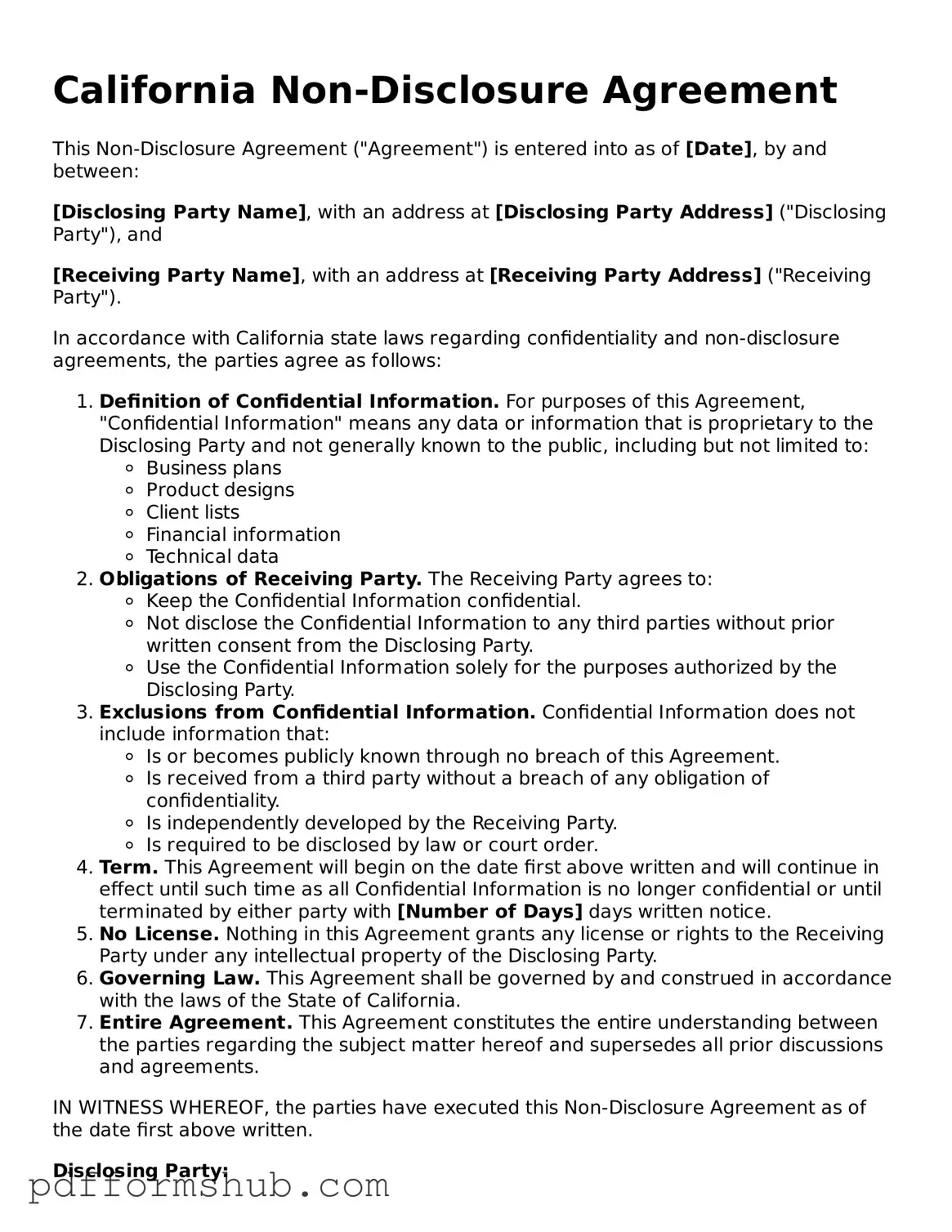Attorney-Verified Non-disclosure Agreement Form for California State
A California Non-disclosure Agreement (NDA) is a legal contract designed to protect sensitive information shared between parties. By establishing clear boundaries around confidentiality, this form ensures that proprietary information remains secure and confidential. Understanding how to properly fill out and utilize this agreement is essential for anyone looking to safeguard their business interests.
If you're ready to protect your valuable information, fill out the form by clicking the button below.
Customize Form
